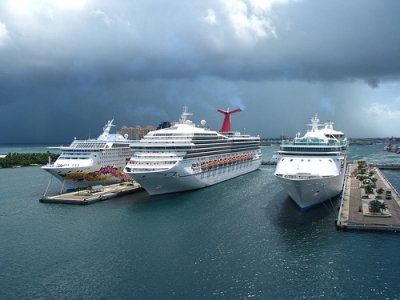Three-pronged approach to enhancing passenger ship safety
EU Transport Commissioner Siim Kallas, set out the Commission’s priorities for passenger ship safety. The keynote speech was delivered at a major passenger ship safety conference in Brussels, hosted by the Commission, to launch a consultation with stakeholders on the priority actions to come.
Vice-President Kallas said: “Tragic accidents, from the Titanic, to the Estonia or the Costa Concordia, put ship safety in the spotlight. There are always lessons to learn from such disasters. But we are not just waiting for the next accident to happen. It would be foolhardy merely to respond after the event. The EU has the toughest ship safety rules in the world and this is the result of a process of continuous improvements, proactive and preventative measures to raise maritime safety standards.”
The Vice-President set a three-pronged approach to enhancing passenger ship safety, based on:
(1) promoting industry voluntary measures,
(2) intensifying enforcement and implementation; as well as
(3) regulatory measures.
The proposals are based on more than two years of intensive work on passenger ship safety, though a Commission review started in 2010.
The priority actions include:
1. Voluntary industry commitments
Vice-President Kallas welcomed the announcement today by the European Cruise Council, of further voluntary commitments going beyond what is legally required in terms of issues such as: route planning, security of bridge access and access to lifejackets on board. Importantly, the European Cruise Council commitments include the appointment of four independent experts to oversee the process and monitor progress and implementation. Voluntary industry commitments can have an important and very immediate effect if they are strictly implemented.
2. Enforcement actions
Safety rules require rigorous enforcement. The Commission has initiated, with the European Maritime Agency (EMSA), and as part of its ongoing work, inspection visits to monitor the implementation of maritime legislation, including in particular in 2012: the targeting of registration of passengers on board. This work is part of a broader programme of targeted enforcement actions for the passenger ship sector.
3. Regulatory measures
The Commission is working on a staged approach, with proposals planned for 2012 and additional specific measures possible in 2013. Shipping is by its nature global so a twin-track approach is necessary, working closely with the International Maritime Organization (IMO) – the UN body which sets international rules for shipping.
The Commission will present legislative proposals on domestic passenger ship safety rules before the end of 2012 – primarily extending existing EU rules beyond domestic passenger ships constructed out of steel. These ships – e.g. smaller passenger ships and ships built in materials other than steel, as well as sailing and historic ships – form an increasingly large share of the market particularly for tourism.
The Commission envisages making a proposal to update EU passenger ship stability rules for roll-on roll-off (ro-ro) ferries with a view particularly to improving stability after damage. At the same time, the Commission will provide its research on ro-ro passenger ship stability in a damaged condition to the IMO, with a view to enhancing the IMO international rules. Stability is particularly important for these ferries due to potential problems with water on deck. The EU has had its own EU regional safety rules for ferries since the Estonia tragedy.
Future considerations: The preliminary findings of the EU funded research project (GOALDS) on cruise and ropax ship stability is scheduled to be completed in the autumn of 2012. The Commission will await the results of these technical studies, as well as the current accident investigation by the Italian authorities of the Costa Concordia shipwreck on 13 January 2012, before considering if further proposals may need to be considered.
Source: EUROPA






























































